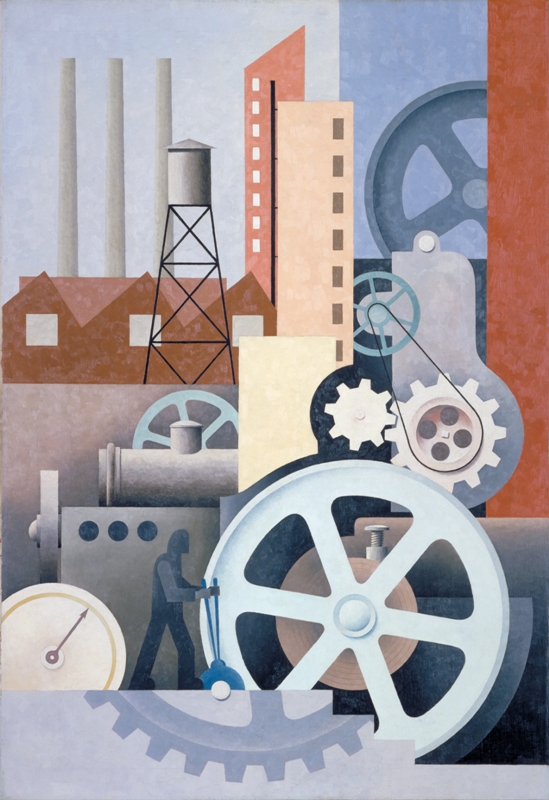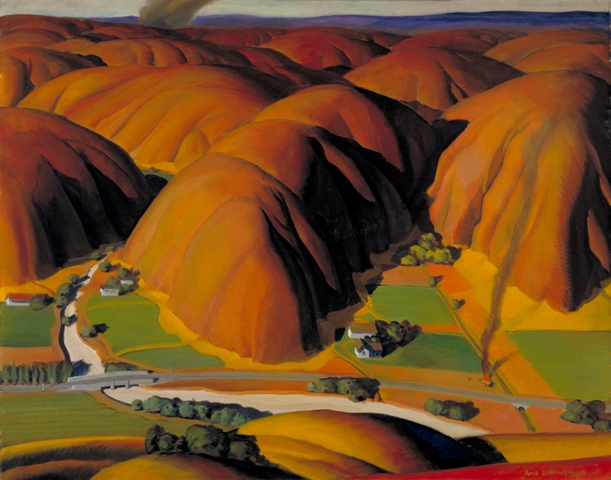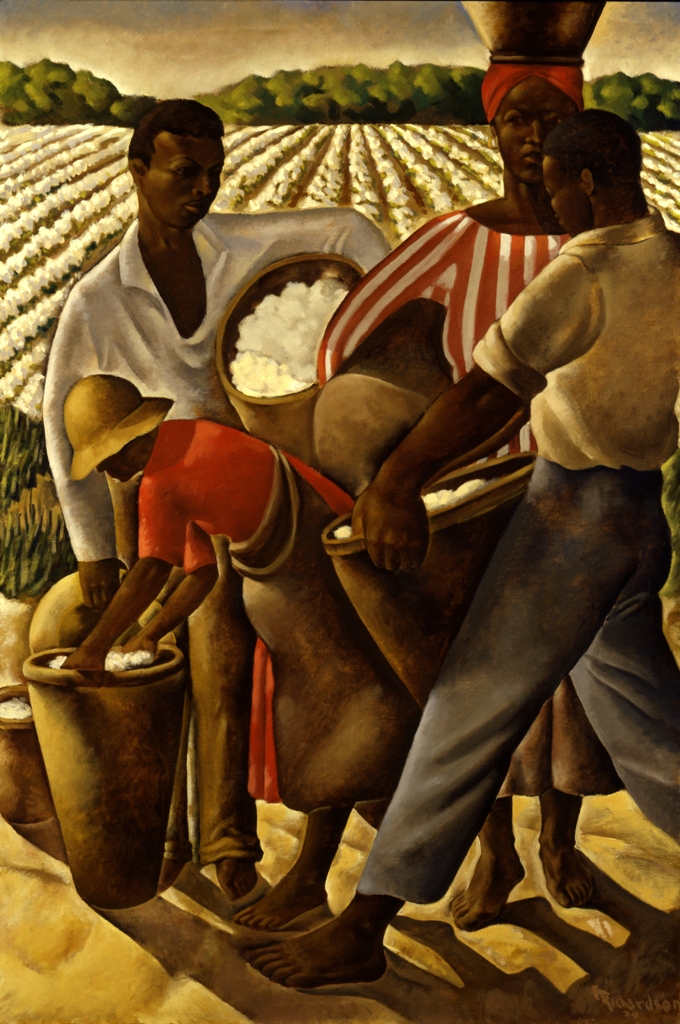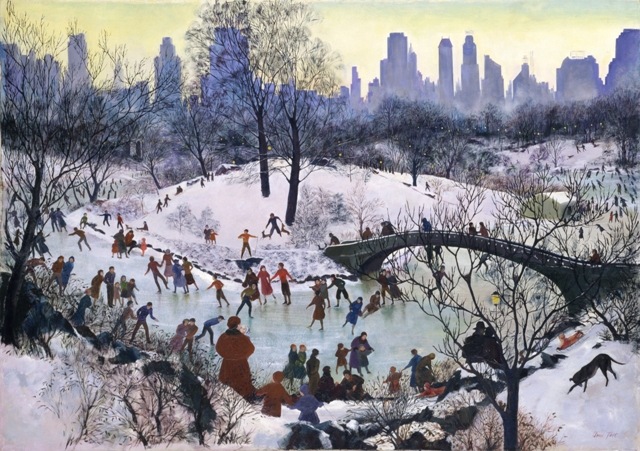
When art worked: New Deal-era paintings at the Minnesota History Center
In the space of just a few months in the depths of the Great Depression, from December 1933 to June 1934, the newly formed and short-lived Public Works of Art Program (PWAP), using taxpayer funds, directly commissioned in excess of 15,600 pieces of art from 3,749 American artists and craftspeople.
E. Dewey Albinson, “Northern Minnesota Mine,” 1934, oil on canvas. This and all images below, courtesy of Minnesota History Center and Smithsonian American Art Museum. Transfer from the U.S. Department of Labor
Several years before the development of its much better known successor, the Works Progress Administration (WPA), the PWAP came to life quickly, at the behest of Franklin Delano Roosevelt and under the direction of retired railroad attorney, lobbyist and artist Ned Bruce, handpicked by FDR to helm the effort. Within a matter of weeks after its inception, the PWAP had paychecks in the hands of thousands of impoverished and previously unemployed painters, printmakers, muralists and sculptors around the country — many of them emerging artists in their twenties and thirties and, considering the time, a relatively large number of women. These federally funded artists were commissioned to create work — at about $84 a piece — preferably figurative, with the directive to document “the American scene.” With cityscapes and lush pastoral scenes, the artists paid homage to their fellow citizens’ labor and leisure alike. The resulting work was then displayed in civic spaces across the country for all to enjoy — schools, libraries, government buildings, parks and community centers.
Fifty-six of these paintings are on view now, at the Minnesota History Center, in “1934: A New Deal for Artists,” an exhibition the Smithsonian American Art Museum has been touring around the country for the past few years. (You can see more than 300 of these images from the Smithsonian’s collection on Flickr.) The saturated palette of this New Deal-era work is distinctive and warm: umber and cerulean, brick red, pumpkin, ochre and forest green, offset with bright pastel accents. These aren’t subtle pieces. The message throughout is overtly patriotic and optimistic, if occasionally subversive. These are paintings intended to honor the grit and honest toil of the American worker, to pay tribute to industrial progress and the nation’s agricultural resourcefulness. An old art history textbook I was thumbing through called such Social Realists’ work “graphically blunt,” and that strikes me as perfectly apt; indebted equally to Art Nouveau, the Expressionists and the politically active Mexican muralistas also popular at the time, the work is inviting and accessible, readymade for mass production in poster form should the occasion arise. They’re bold, yes, and sometimes charming, but I wouldn’t call these paintings pretty — indeed some are proudly ugly.
Daniel Celentano. “Festival,” 1933-1934, oil on canvas mounted on fiberboard.
There’s an unsettling nostalgia to seeing this show at this time. The urge to conflate the zeitgeist and desperate circumstances of the 1930s with the hardships of our contemporary economic climate is nearly irresistible, but wrong-headed and facile all the same. The times, not to mention our collective aesthetic sensibility, aren’t at all what they once were. Simply put: There will be no WPA redux for the 21st century. In recent months and years, there has been accelerated federal support for arts organizations, institutions and civic cultural initiatives, it’s true. But after the culture wars of the 1980s and ’90s, and with shrinking philanthropic endowments across the board thanks to soggy market conditions, I suspect both the electorate and major cultural funders — private and public alike — have lost their appetite for widespread, direct support of individual artists on that kind of national scale.
Paul Kelpe, “Machinery (Abstract #2),” 1933-1934, oil on canvas.
Even so, taken simply as a product of its own historical moment, “1934” offers a fascinating glimpse into an era when our country’s great public works were as much aesthetic as practical endeavors, when artists worked side by side with architects and engineers, integral to our shared pursuit of the common good.
Ross Dickinson, “Valley Farms,” 1934, oil on canvas.
Earle Richardson, “Employment of Negroes in Agriculture,” 1934, oil on canvas.
Agnes Tait, “Skating in Central Park,” 1934, oil on canvas.
“1934: A New Deal for Artists,” a traveling exhibition of work on loan from the Smithsonian American Art Museum, will be on view through September 30 at the Minnesota History Center, Minnesota History Center, 345 Kellogg Blvd. W., St. Paul. For the center’s hours of operation, directions, admission prices and additional information about the exhibit: minnesotahistorycenter.org/exhibits/1934-new-deal-artists
Recent Content
-
Artsarticle ·
-
Artsarticle ·
-
Artsarticle ·






